Bose QuietComfort Ultra Earbuds vs Ultra Open Earbuds: which Bose buds are right for you?
Open or Ultra?
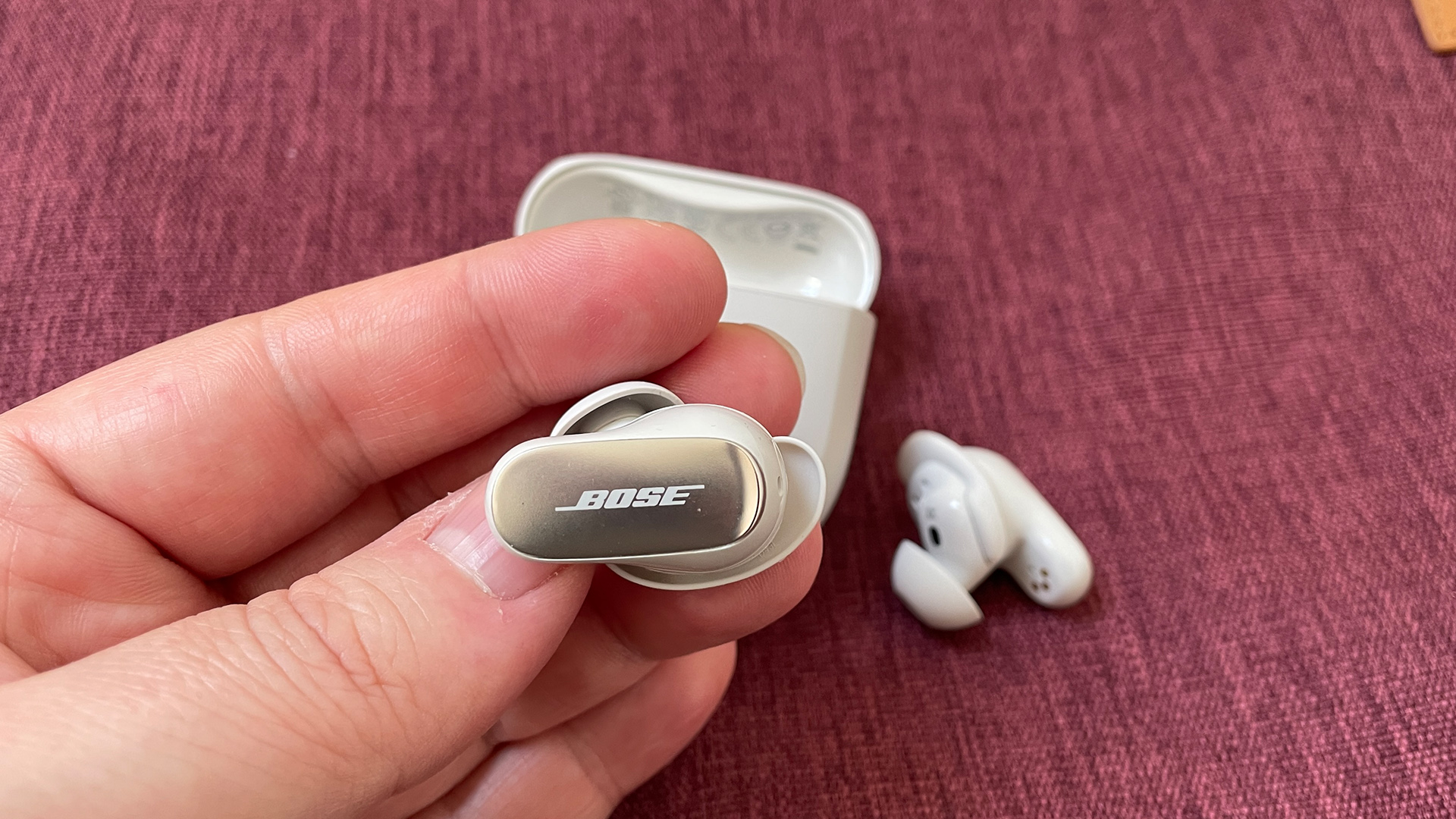
Bluetooth: 5.3
Battery life: 6 hours (buds), 24 (total inc. case)
Noise cancelling? Google Assistant, Amazon Alexa
Weight: 6g (per earbud)
Finishes: x 2 (black, white smoke)
The five-star Bose QuietComfort Ultra Earbuds are up there with the best of them. Whether it's their spirited sound or their beautiful build, not to mention some of the best ANC in town, the Ultra Earbuds put forward a very, very persuasive case.
For
- Punchy, musical sound
- Solid, weighty bass
- Excellent ANC
- Comfortable
Against
- Immersive Audio slashes battery life
- No multipoint Bluetooth
- No wireless charging
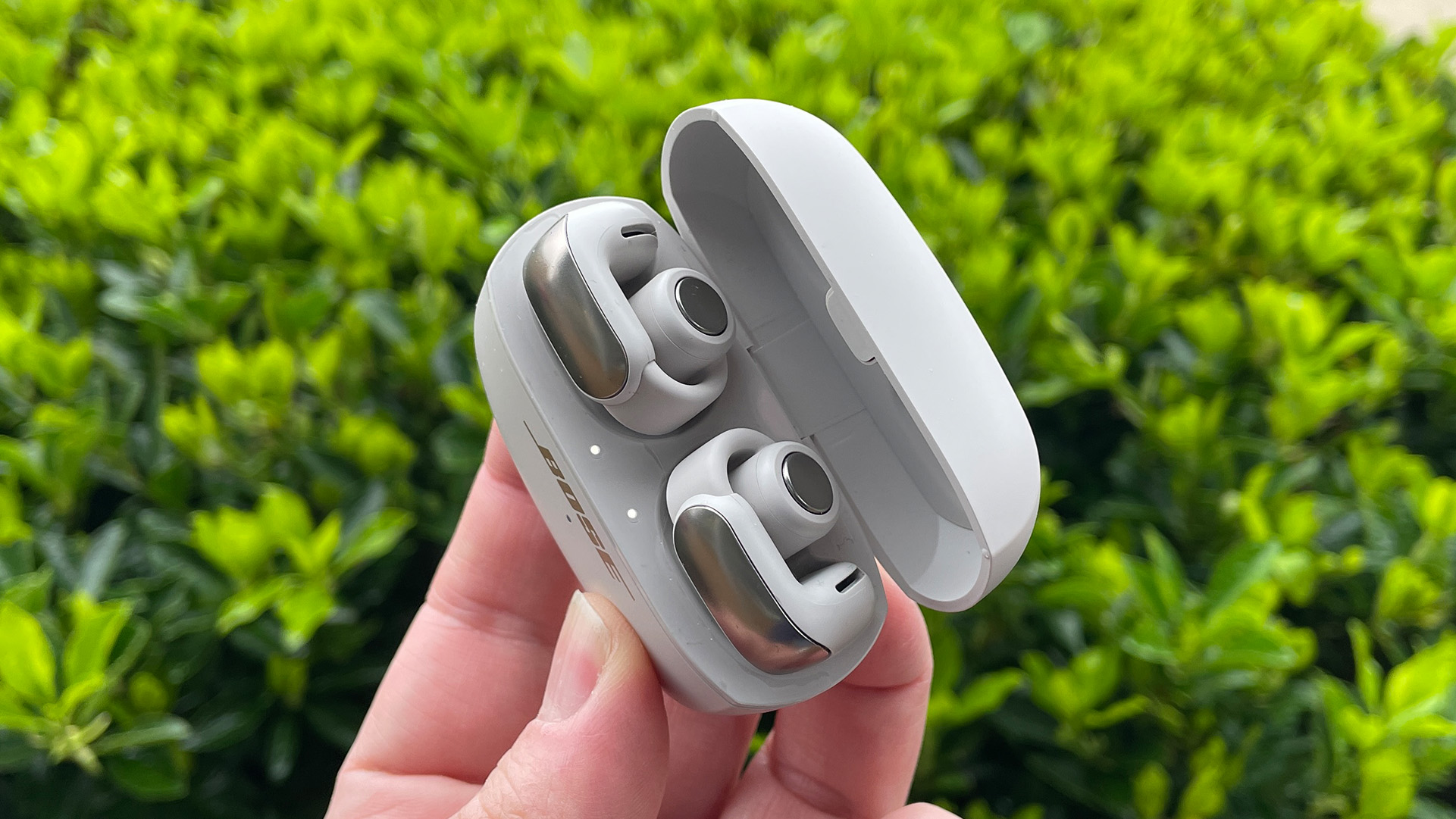
Bluetooth: 5.3
Battery life: 7.5 hours, 26.5 (total inc. case)
Noise cancelling? No
Weight: 6.4g (per earbud)
Finishes: x 2 (black, white smoke)
Bose has done something different with the Ultra Open Earbuds and, by and large, just about pulled it off. There are a few imperfections, but for tackling a tricky, novel concept, these buds are about as good as we've seen.
For
- Musical, entertaining sound
- Good sense of timing
- Surprisingly solid, weighty bass
- Comfortable fit
Against
- Relatively expensive by earbuds standards
- Not the last word in clarity or detail
- Call quality could be better
Usually, when we pit two pairs of wireless earbuds against each other, they're cut from a similar cloth. While manufacturers and even prices tend to vary, it's rare for us to compare directly wireless buds that, on the face of it at least, seem to be pulling in very different creative directions.
This apparent design divergence is what makes comparing both sets of Bose buds so interesting. Despite being made by the same big-name manufacturer, the five-star Bose QuietComfort Ultra Earbuds take a completely different approach to the novel, open design of the Bose Ultra Open Earbuds, the latter of which ditch the conventional in-ear setup for a less intrusive, more awareness-orientated configuration.
What we have here, then, is two very different approaches to the wireless earbud, with one pair taking the more traditional route and the other striving for more cutting-edge territory. The only way you'll know which is right for you, though, is, of course, by reading on.
- I switched from the Bose QuietComfort Ultra Earbuds to the Bowers & Wilkins Pi8, and I'm struggling to go back
- Sonos Ace vs Bose QuietComfort Ultra Headphones: which should you buy?
Bose QC Ultra Earbuds vs Ultra Open Earbuds: price
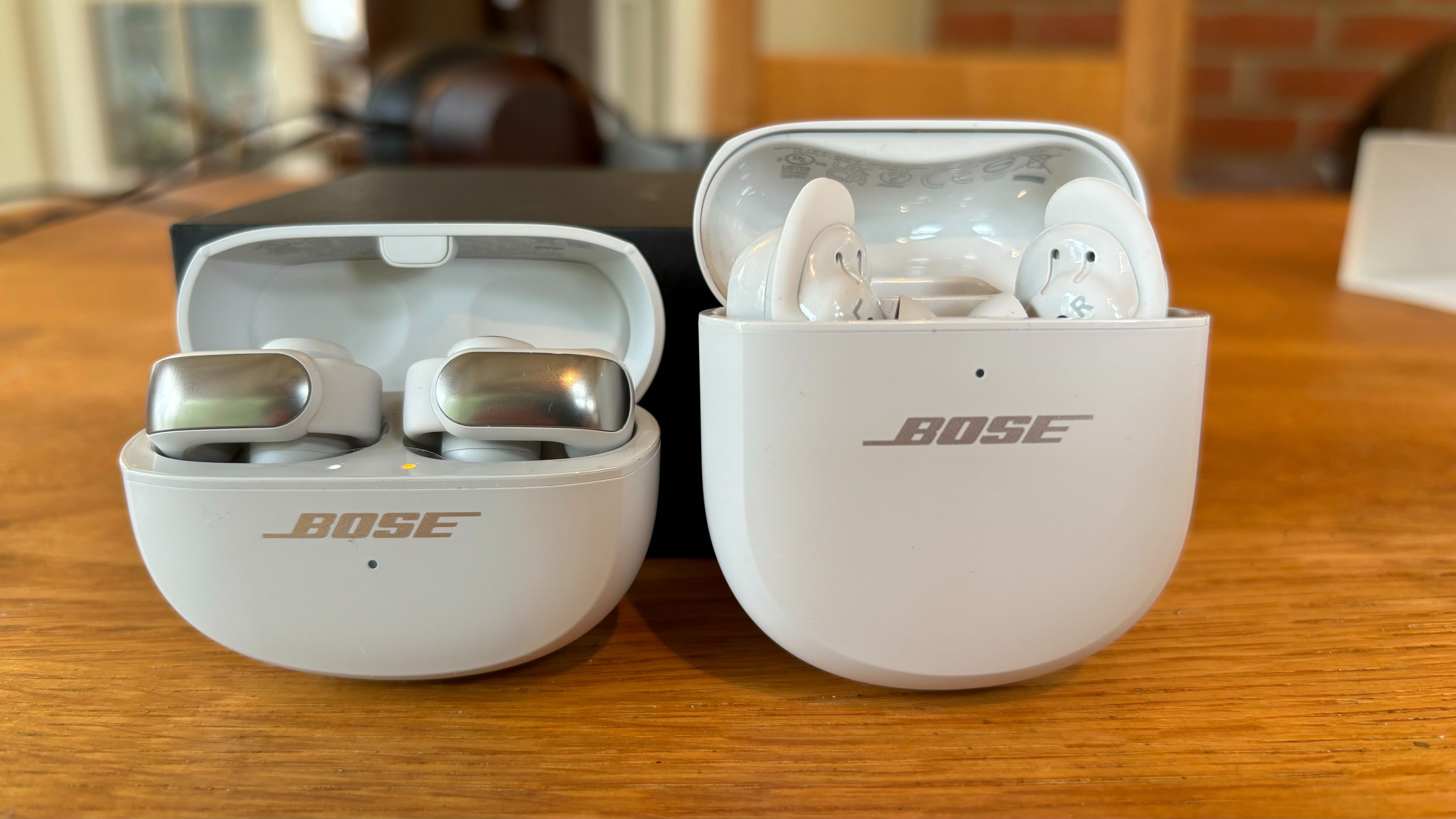
The QuietComfort Ultra Earbuds debuted at £300 / $299 / AU$450, a fairly meaty price tag that eclipsed the substantial sum attached to their rival Sony WF-1000XM5 (£259 / $299 / AU$419). The Bose have been around for a decent chunk of time, though, so a few welcome discounts are seeing those prices drop intermittently to the £250 / $250 / AU$400 mark.
The Ultra Open Earbuds are newer than the flagship QC Ultra Earbuds, landing with pretty much exactly the same prices as their established stablemates. We also tested the Open Earbuds at £299 / $299 / AU$449, a price that matches the Ultra Earbuds' initial price tag but which hasn't really seen any significant drops so far. Discounts will inevitably creep in as time goes on, so it's just a case of playing the waiting game if you're after a pair on the cheap. Or cheap-er, anyway.
Bose QC Ultra Earbuds vs Ultra Open Earbuds: design and comfort
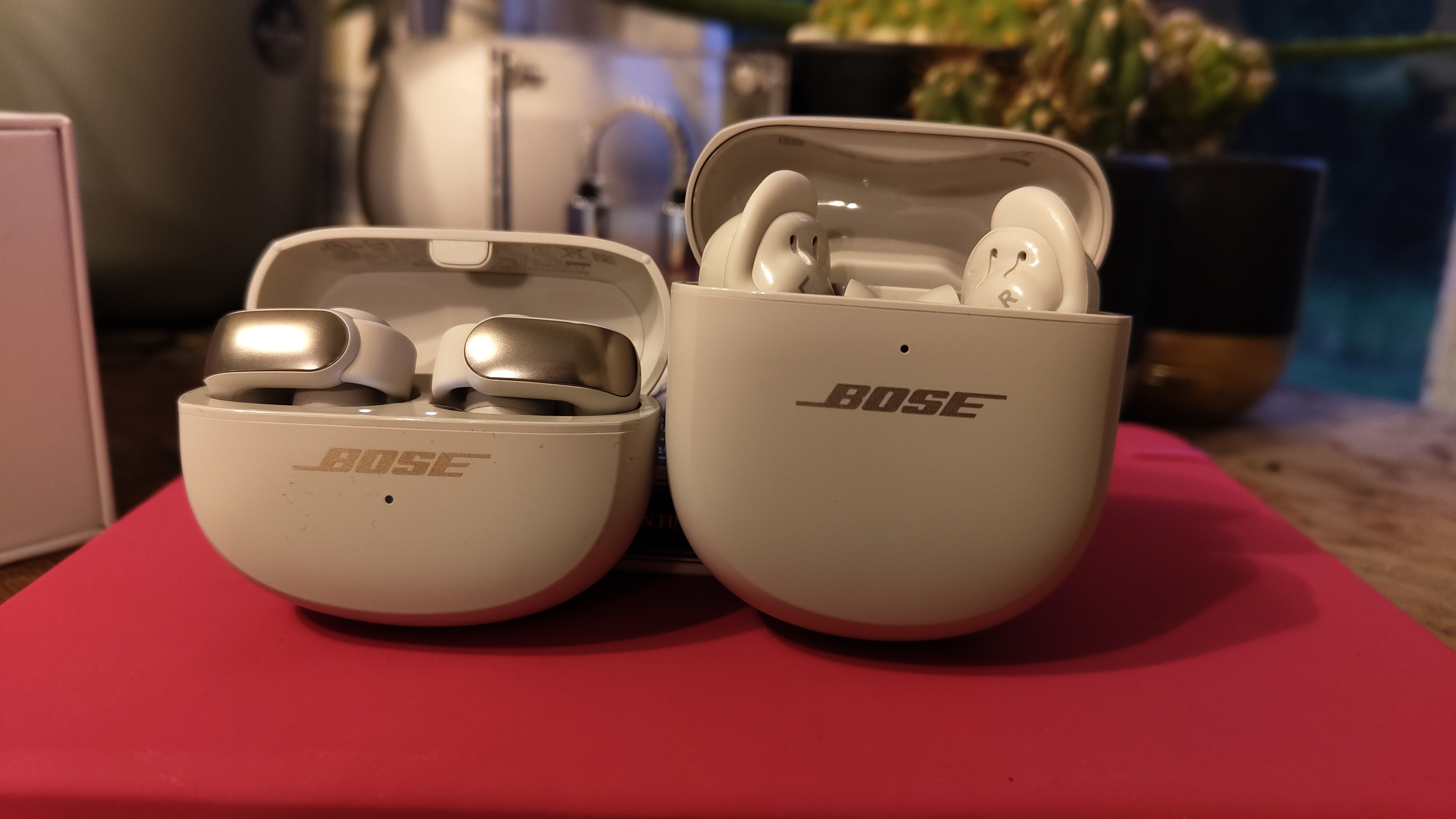
While they don't take a huge swerve out of the design lane followed by the Award-winning Bose QuietComfort Earbuds II, some noticeable advancements help the QC Ultra Earbuds earn their name. Not only are they shinier and a little more substantial than the outgoing QC Earbuds II, but they sport a small but immensely handy pair of stability bands attached to each earpiece which helps you lock them in place more securely. It's a small touch, but boy does it make a big difference to security and comfort, especially if you take the QC Ultra Earbuds out for a jog or down the local gym, say.
Unlike the directly-rivalling Sony WH-1000XM5, the Bose are not tricky to get nestled into your ears, with soft and pliable tips that usually facilitate a great seal without excessive burrowing or the hassle of trying to achieve a locked-in feel. Comfort-wise, the flagship buds nail it.
They also nail touch controls, with each stem including a touch-sensitive region which lets you control your music's playback, switch noise-cancelling modes and change the volume at the tap of a finger. If you like touch controls, the Bose are very hard to fault.
The Ultra Open, as you may have guessed, take a completely different approach, but different shouldn't be read as a by-word for "worse". Each Ultra Open earpiece is made up of three main parts: the cylindrical bud, the battery and a small silicone band that connects the two sections, allowing the novel buds to bend, flex and wrap around the external ear rather than relying on a classic bud section which burrows in directly.
If you find your perfect listening angle, it's a configuration that works well, and while it will vary from wearer to wearer, we found that a 45-degree angle generally keeps the Ultra Open in a position which provides a happy medium between adequate sonic performance and secure, worry-free comfort.
You may have natural concerns about sound leakage, but we didn’t consider unwanted sonic bleeding to be a major issue when compared to the more traditional design of the QC Ultra Earbuds. At standard listening volumes, letting the world know that you're enjoying a cheeky slice of Boney M isn't likely to be too much of a concern.
One of the primary purposes of that open design is, naturally, to allow more sound into your ear so that you're more aware of your surroundings (the polar opposite of what the Ultra Earbuds' ANC is trying to achieve), and as long as you don't whack up the volume to ridiculous levels, you'll notice that external sounds come through more clearly with the Ultra Open buds than with Bose's flagship in-ears. Very handy if you regularly commute near to a dodgy road, say, or if you want your wits about you when you're working out in a crowded gym and don't want to whack a nearby squatter with your Olympic barbell.
Bose QC Ultra Earbuds vs Ultra Open Earbuds: features
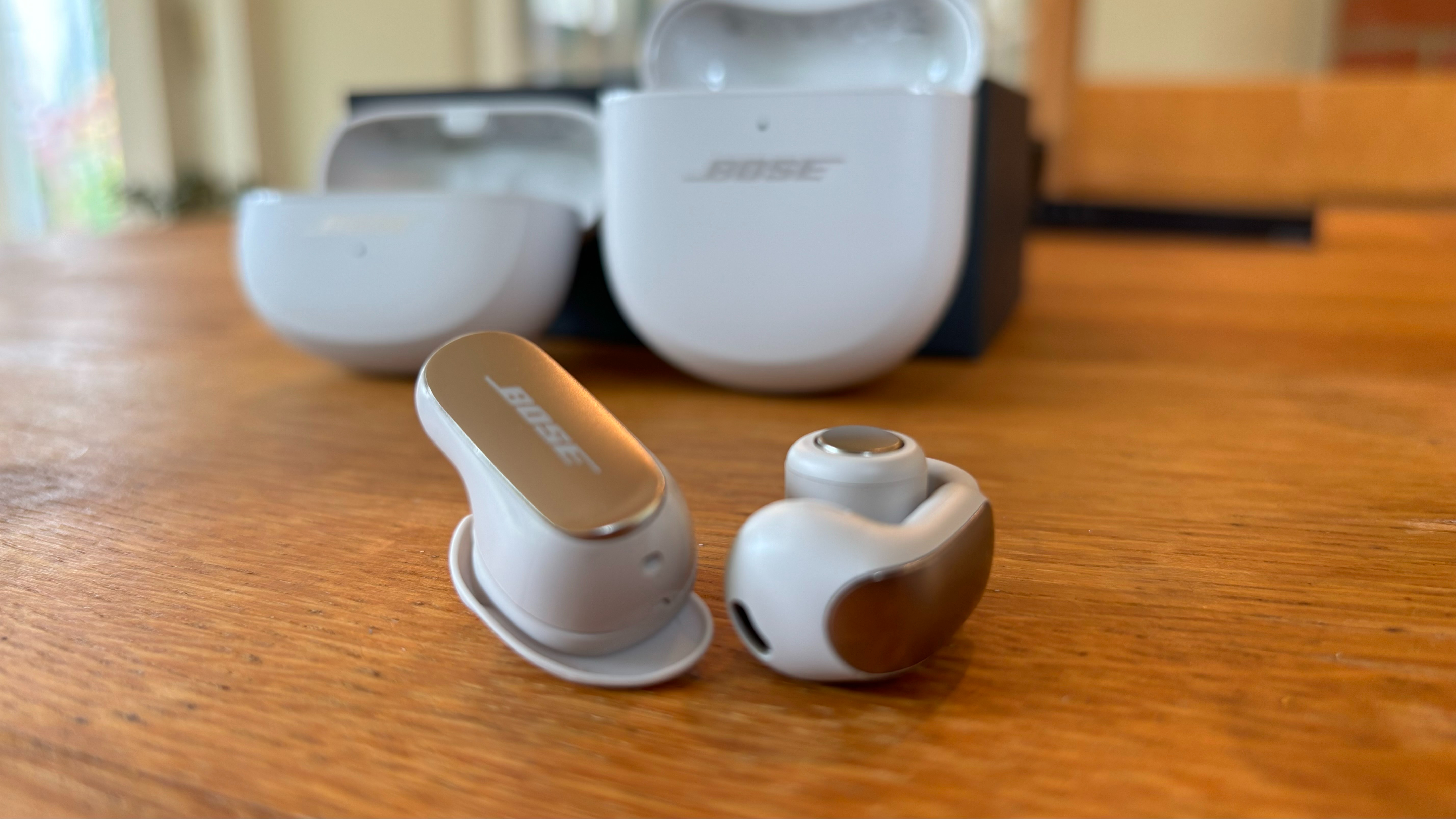
While Bose's QuietComfort Ultra Earbuds are strong on features, there are a few unexpected gaps and niggles that we perhaps didn't anticipate from what are, after all, the US company's flagship wireless buds. At the time of writing, there’s no multipoint Bluetooth, which is disappointing for a pair of earbuds at this price point, while wireless charging isn’t included unless you fork out an extra £50 / $49 / AU$80 for an optional charging cover. Ouch.
One of the big selling points for the QC Ultra Earbuds is the integration of "Immersive Audio", essentially the brand's take on spatial audio. The aim is to have the audio feel as though it's "away" from your head, more akin to listening to a pair of stereo speakers, and while it's more special, we found the experience to be inconsistent and blighted by phase and delay issues. It's not awful, but there's certainly room for improvement.
Battery life for the QC Ultra Earbuds isn't better than that of their predecessors, clocking in at around six hours plus 18 from the case, but if you want to listen to Immersive Audio those numbers will drop rather significantly to just four hours. Call quality is excellent, though, while ANC capabilities remain as outstanding as ever, combining to suppress background noises and bring voices through with real natural clarity.
The Ultra Open, meanwhile, are even lighter on features, although that's to be expected given their form and primary function. An IPX4 rating apes that of the QC Ultra Earbuds, while battery life is a solid 7.5 hours from the buds and a total of 27 hours when the case is accounted for.
You do get Immersive Audio, too, although our reservations do carry over from one pair to the other, with the tech's rather hit-and-miss approach just tempering our affections somewhat. What you don't receive with the Ultra Open, of course, is noise cancelling, nor do you receive auto-play/pause or any Bluetooth multipoint, the latter of which we'd have hoped to have found considering the price.
Bose QC Ultra Earbuds vs Ultra Open Earbuds: sound
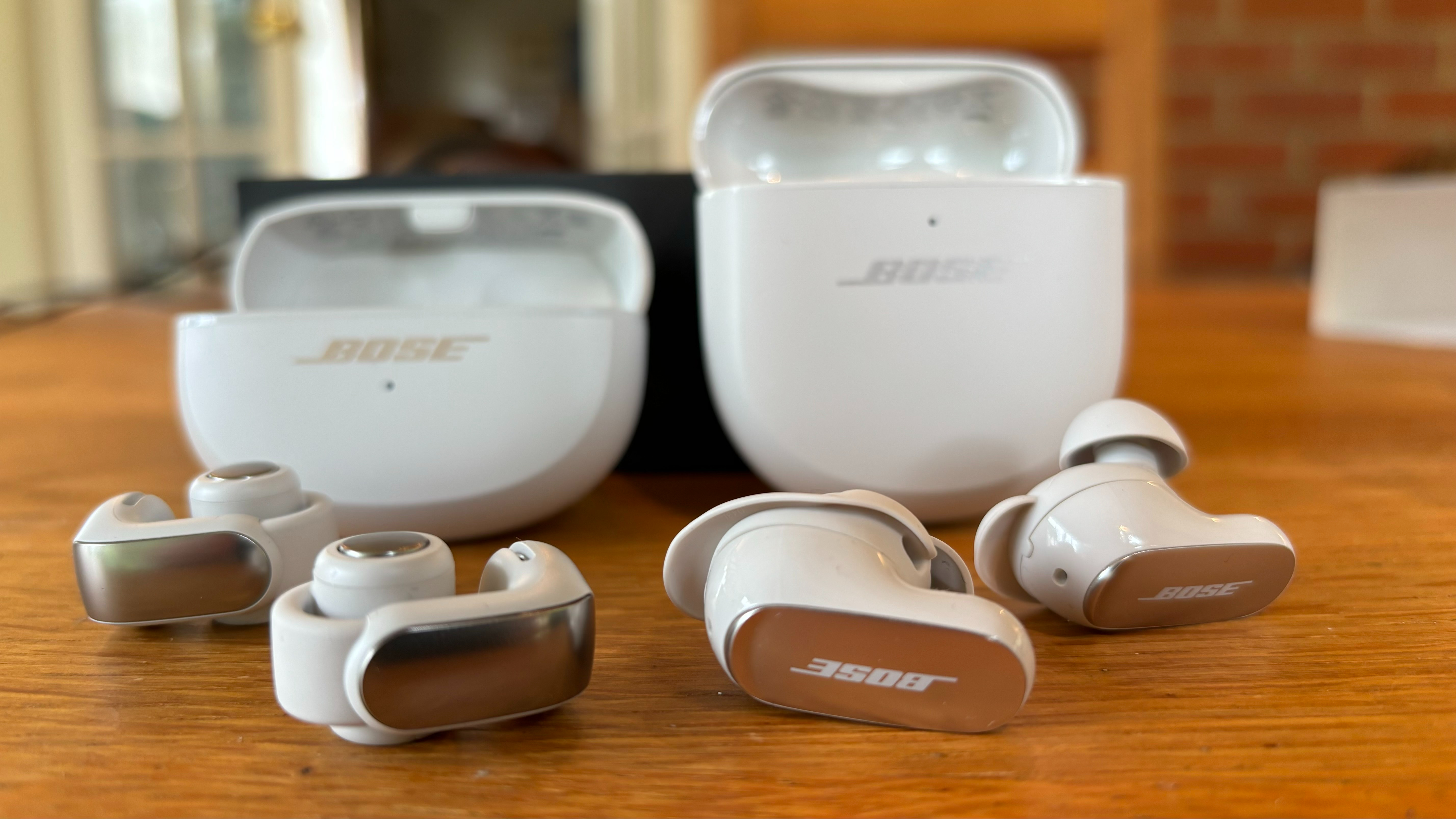
If we were just a tad let down by the Bose Ultra Earbuds' feature set, it's a stirring tale of redemption regarding their sonic delivery. This is not a cheap pair of earbuds, yet the performance offered by Bose's flagship model easily justifies the substantial price you'll pay. As we stated in our review, "There’s depth and weight behind each, note but they’re also dispatched efficiently enough to keep the music bouncing along. This pair hasn’t lost the sense of musicality or the entertainment factor of their predecessors."
Not only are the Ultra Earbuds detailed and authentic-sounding, but they pulse along with a stirring sense of purpose and drive, all aided by a refreshing amount of openness and spaciousness that give every dynamic element the space it needs to be heard and enjoyed to the fullest. Even the edges of instruments, such as drum thwacks or guitar strums, are clearly defined and properly formed, tricky areas of sonic delivery that often separate an outstanding pair of buds from the rest of the herd.
Building on the work done by the QC Earbuds II, the QC Ultra Earbuds have added lighter, peppier shades to their overall palette, lending them a skippy, snappy edge that we find elevates them to new sonic levels. All in all, they're just a pleasure to listen to no matter your musical preferences or the genres you feed them.
The Open, as you're probably expecting, are different sonic beasts, albeit with quite a few surprises up their proverbial sleeves. Even with their open design accounted for, there’s a truly impressive sense of solidity and weight to low frequencies, and while they'll let the outside world in, it rarely seems to spoil the quality of the sound firing into your ears.
Plus, they’re musical, rhythmic and lively to listen to. As we stated in our review, "One of the biggest compliments we can give the Ultra Open Earbuds is that they exhibit the same likeable Bose character we’ve heard from its other recent Bluetooth in-ears." That's high praise considering how good the flagship Ultra Earbuds sound.
It's not all perfect, and perhaps that's to be expected from Bose's first foray into rather unfamiliar territory. We'd like a bit more detail and clarity, while bass tones can occasionally seem a smidge hollow and artificial compared to the best in-ear wireless designs. Far, far from disgraceful when you consider the inevitable sacrifices open buds are forced to make, but worth noting if you require spotless sonic credentials from your next pair of go-to in-ears.
Bose QC Ultra Earbuds vs Ultra Open Earbuds: verdict
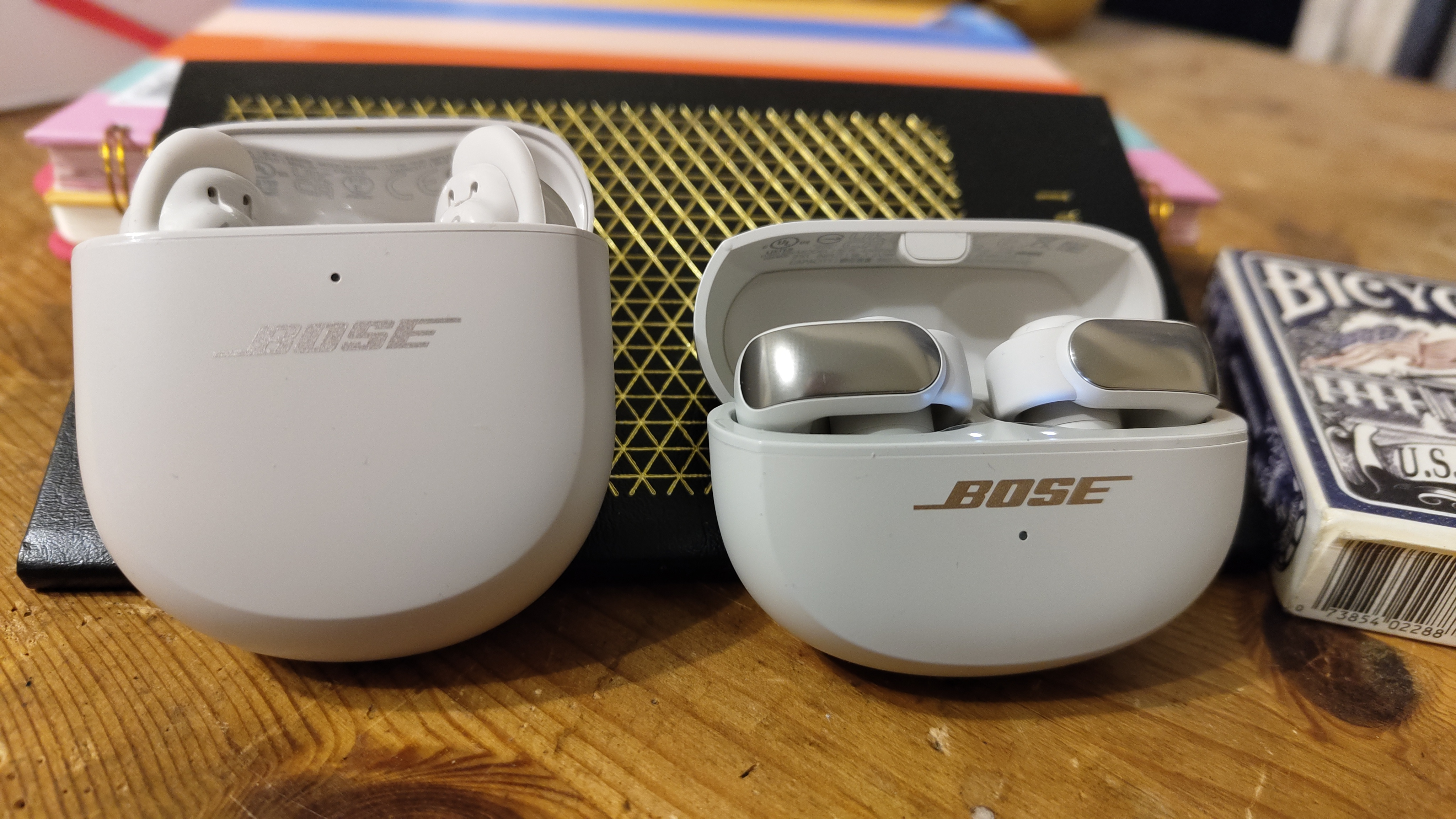
While your eyes will be drawn to the extra star adoring the Bose QuietComfort Ultra Earbuds' review (or the conspicuous gap preventing the Open Ultra from receiving the full haul), there's a little more to this story than good vs bad or, should we say, good vs even better.
What we have here is two different approaches to making a pair of wireless earbuds, and so those critical aspects of design and daily functionality will be the biggest influence on your decision. If you prioritise the best sound possible and you're happy with an in-ear fit (and you should be given how well-designed the Ultra Earbuds are), the five-star flagship pair should be the ones to go for. They're a little let down in the features department, but that's a shortcoming shared by their open counterparts anyway.
What you're getting with the Open buds – indeed, what you're paying a decent sum for – is that distinctive design, something which definitely has its positive points. It's great for runners who want a decent, comfy fit while letting the world in, as well as commuters who like to stay aware of their surroundings as they listen. It's also a smart choice for users who find that in-ear designs can cause discomfort after a time, or who find that traditional buds won't stick in their ears as snugly as they'd like.
Crucially, the Open buds don't sacrifice too much of that brilliant Bose sound. No, they're not as good as the superbly well-rounded QC Ultra Earbuds, but they're still unequivocally a pair of classy in-ears that strongly hint at that Bose pedigree without quite avoiding a few little sacrifices. For the best sound possible from a pair of Open earbuds, though, they're pretty much in a class of one... for now at least.
MORE:
Read our full Bose QuietComfort Ultra Earbuds review
And our Bose Ultra Open Earbuds review
Bose QuietComfort Ultra Earbuds vs Sony WF-1000XM5: which are better?
5 sound settings you shouldn't ignore on the Sony WF-1000XM5
Sony WF-1000XM5 vs Apple AirPods Pro 2: which premium earbuds are better?
See what else is available: best true wireless earbuds
Get the What Hi-Fi? Newsletter
The latest hi-fi, home cinema and tech news, reviews, buying advice and deals, direct to your inbox.

Harry McKerrell is a senior staff writer at What Hi-Fi?. During his time at the publication, he has written countless news stories alongside features, advice and reviews of products ranging from floorstanding speakers and music streamers to over-ear headphones, wireless earbuds and portable DACs. He has covered launches from hi-fi and consumer tech brands, and major industry events including IFA, High End Munich and, of course, the Bristol Hi-Fi Show. When not at work he can be found playing hockey, practising the piano or trying to pet strangers' dogs.
-
JACY Excellent analysis of the pros and cons of both types of earbuds. I really enjoyed reading it, and more importantly, it helped me make a purchasing decision.Reply
Good job!
